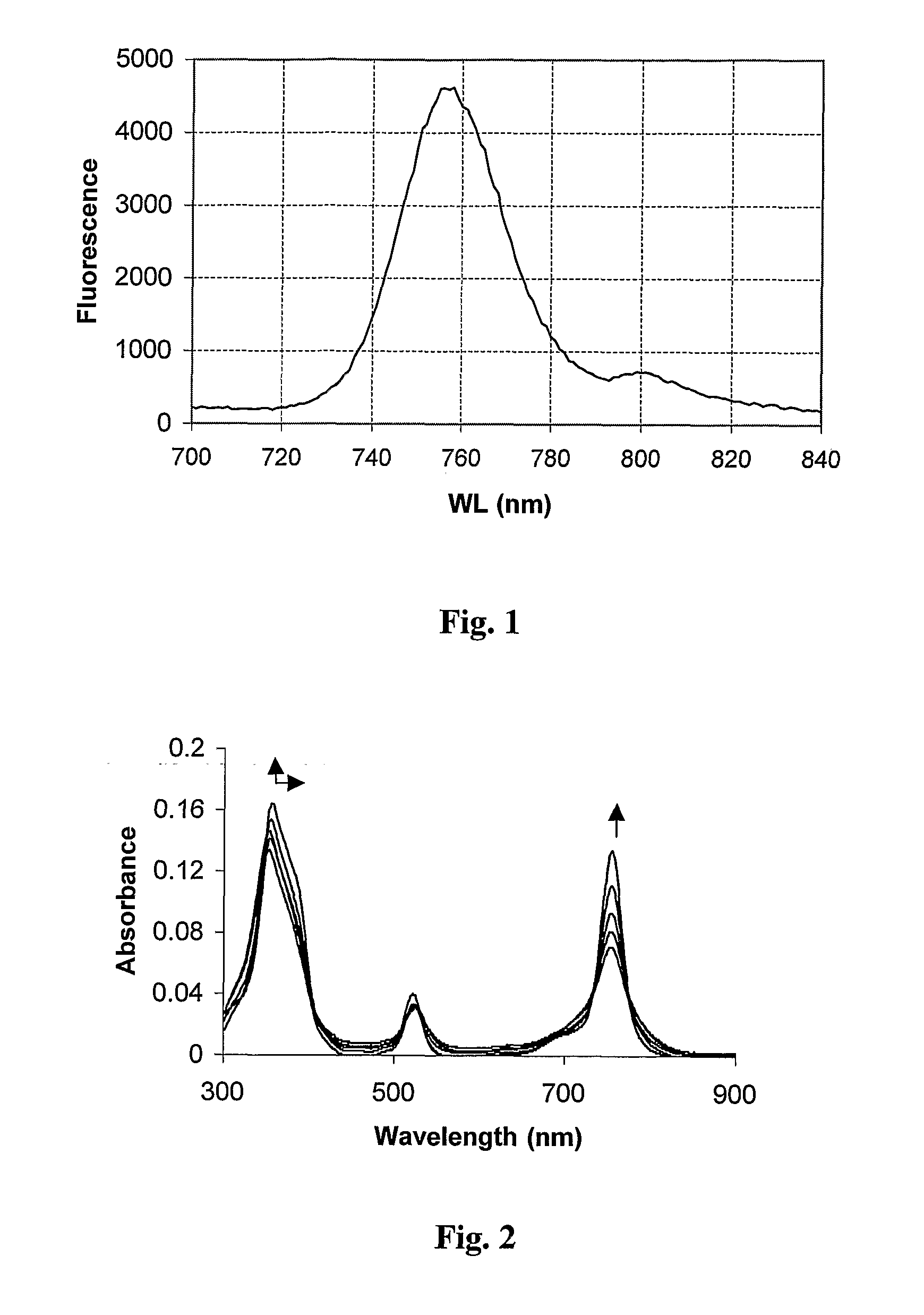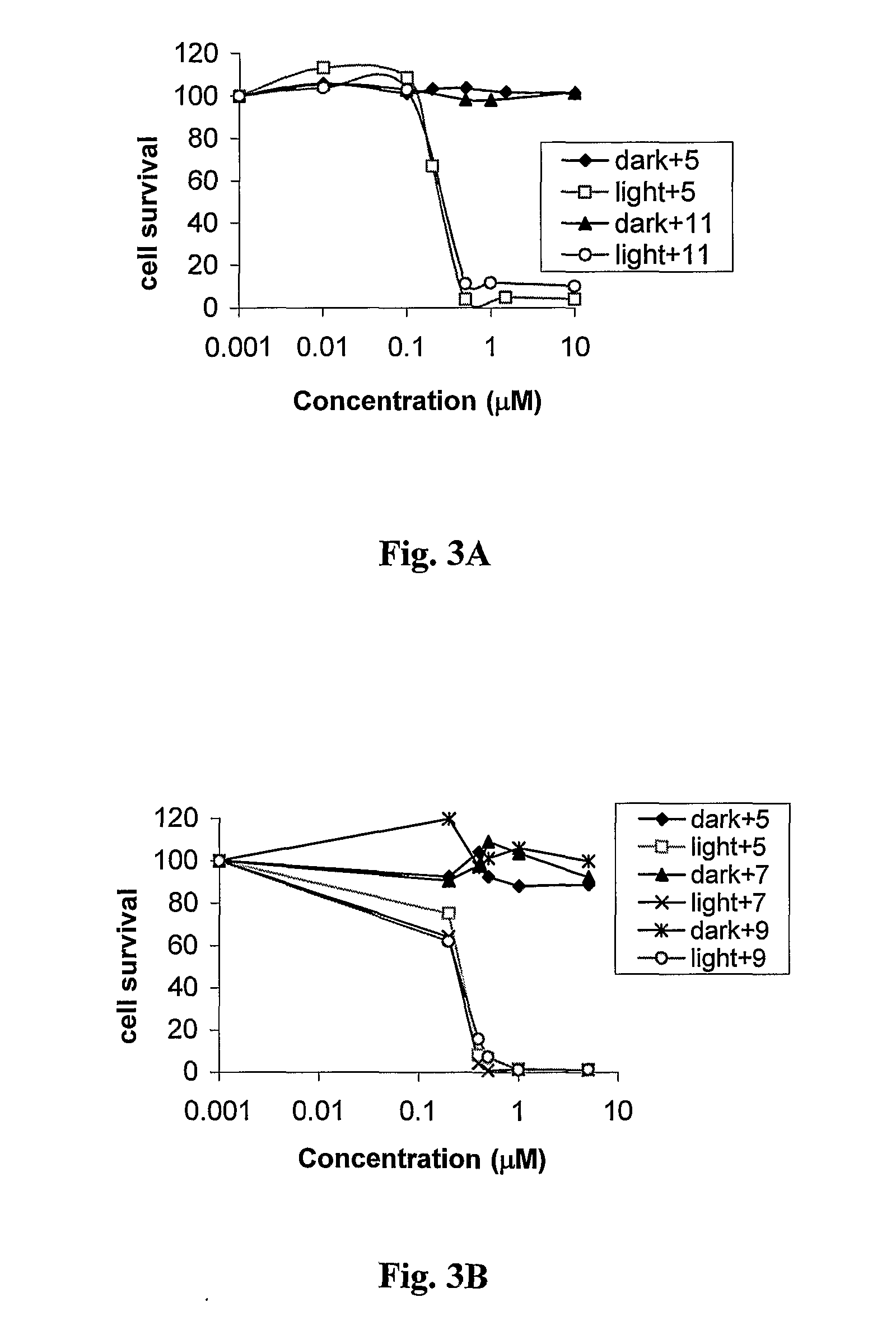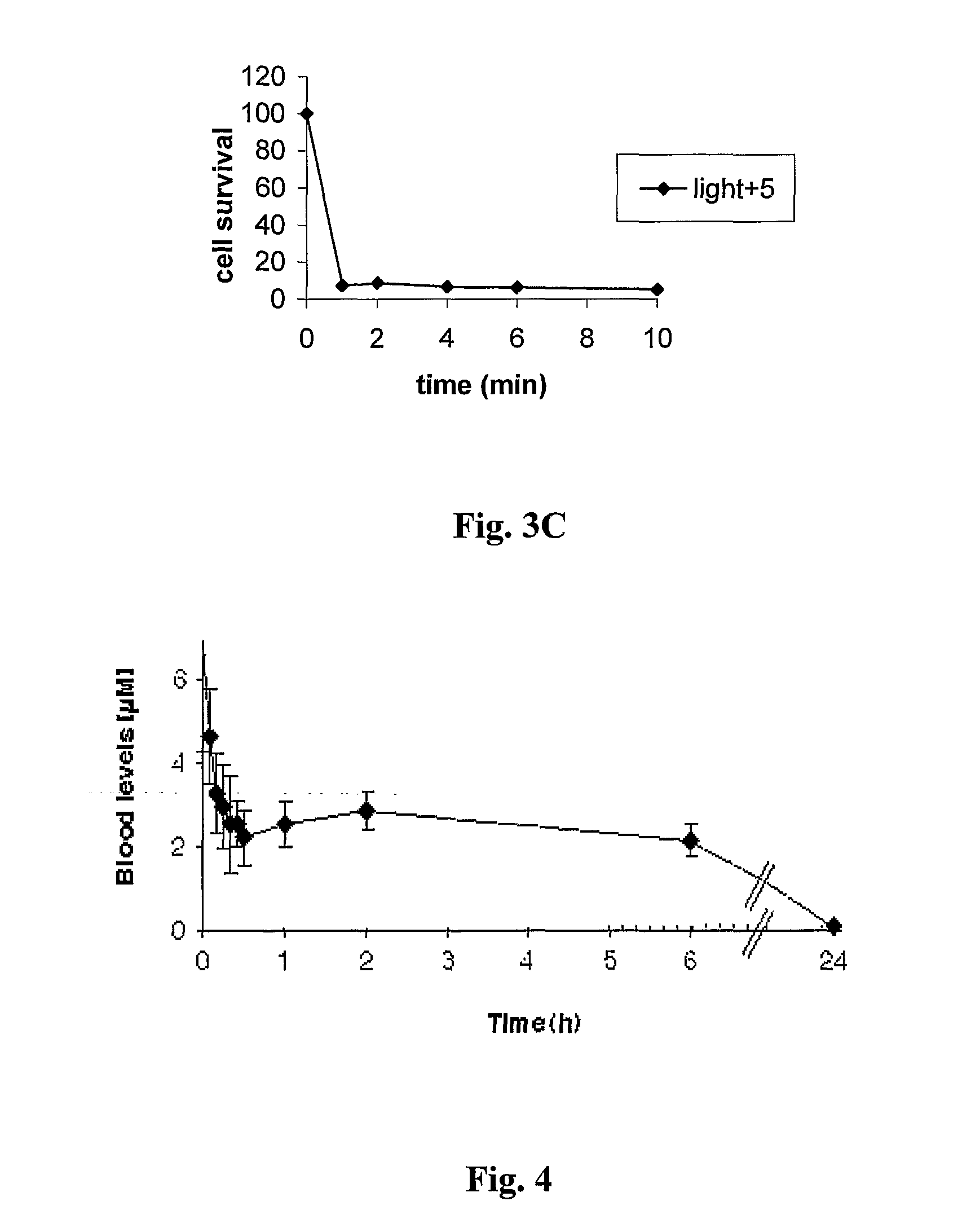Catatonic Bacteriochlorophyll Derivatives
a catatonic bacteriochlorophyll and derivative technology, applied in the direction of biocide, antibacterial agents, drug compositions, etc., can solve the problems of prolonged (days to months) skin phototoxicity, limited application of photosensitizing agents, etc., to prevent or reduce in-stent restenosis
- Summary
- Abstract
- Description
- Claims
- Application Information
AI Technical Summary
Benefits of technology
Problems solved by technology
Method used
Image
Examples
example 1
31-Oxo-15-methoxycarbonylmethyl-Rhodobacteriochlorin 131,173-di(2-aminoethyl)amide (Compound 4)
[0234] As depicted in Scheme I, for the synthesis of compound 4 (a rhodobacteriochlorin derivative in which the central metal atom is absent), Bpheid 2 was first activated at the C-173 carboxylic acid by N-hydroxysuccinimide (NHS) as follows: 50 mg of Bpheid (compound A), 80 mg of NHS and 65 mg of 1,3-dicyclohexylcarbodiimide (DCC) were mixed in methyl chloride overnight at room temperature. Then the solvent was evaporated under reduced pressure, the dry residue was dissolved in chloroform (ca. 50 ml), filtered from insoluble material, and, after evaporation of the solvent, the product, Bpheid-173-(1-oxy-succinimide), was obtained. The conversion was about 95% (TLC).
[0235] Eight mg (8 mg) of Bpheid-173-(1-oxy-succinimide) was dissolved in a mixture of chloroform and methanol (2:1, v:v), in order to enable the opening of the isocylic ring of Bpheid, and ethylenediamine (1 ml) was added. T...
example 2
31-Oxo-15-methoxycarbonylmethyl-Rhodo-bacteriochlorin 131,173-di(2-N3-trimethylammoniumethyl)amide dicitrate salt (Compound 5)
[0238] Compound 5 was prepared from compound 4, as depicted in Scheme I. Diisopropylethylamine (DIEA) (27 μl) and methyl iodide (30 μl, CH3I) were added to a solution of 4 (3 mg) in 2 ml of chloroform. The reaction mixture was treated with Argon for 10 min and stirred overnight at room temperature in the dark. The product was extracted twice with water (about 50 ml). The aqueous layer was collected and evaporated, and the product was purified by HPLC (HPLC JASCO, Japan). Column: C-8 250×20 (YMC, Japan). Solvent A: 0.05 M citrate buffer, pH 4.0. Solvent B: acetonitrile. The elution profile of title compound 5 as the dicitrate salt is described in Table 1. The fluorescence emission spectrum of compound 5 in methanol is shown in FIG. 1.
TABLE 1Gradient profile of purification of compound 5Time (min)Flow (ml / min)A %B %051000155010017501002251000300.21000
[0239] ...
example 3
31-Oxo-15-methoxycarbonylmethyl-Rhodobacteriochlorin 131,173-di(3-aminopropyl)amide (Compound 6)
[0242] Compound 6 was obtained as described in Example 1 above by reaction of Bpheid-173-(1-oxy-succinimide) with 1,3-propylenediamine.
[0243] ESI-MS (+): 813.86 (M+NH2CH2CH2CH2NH2), 739.74 (M).
[0244] Optical absorption in chloroform, λ (relative absorption): 753 (1.00), 522 (0.29), 354 (1.22) nm.
PUM
| Property | Measurement | Unit |
|---|---|---|
| Mass | aaaaa | aaaaa |
| Mass | aaaaa | aaaaa |
| Mass | aaaaa | aaaaa |
Abstract
Description
Claims
Application Information
 Login to View More
Login to View More - R&D
- Intellectual Property
- Life Sciences
- Materials
- Tech Scout
- Unparalleled Data Quality
- Higher Quality Content
- 60% Fewer Hallucinations
Browse by: Latest US Patents, China's latest patents, Technical Efficacy Thesaurus, Application Domain, Technology Topic, Popular Technical Reports.
© 2025 PatSnap. All rights reserved.Legal|Privacy policy|Modern Slavery Act Transparency Statement|Sitemap|About US| Contact US: help@patsnap.com



